Charcuterie boards are trending. If you haven't built one yet, it's time to have a party and invite over your loved ones, but tell them to come hungry. Don't worry if you don't know much about charcuterie boards. We have the answers. Keep reading to find out more.
With charcuterie boards, the only limits are your budget, your imagination, and your available space. Your charcuterie board's size will be determined by the number of guests you expect, the variety of food you want to include, and the space you have for display.
Let's take a look at some of the basics of charcuterie boards. This information will help you know how to plan your platter better, whether you are building one for a night in with a few close friends or for a large formal gathering.
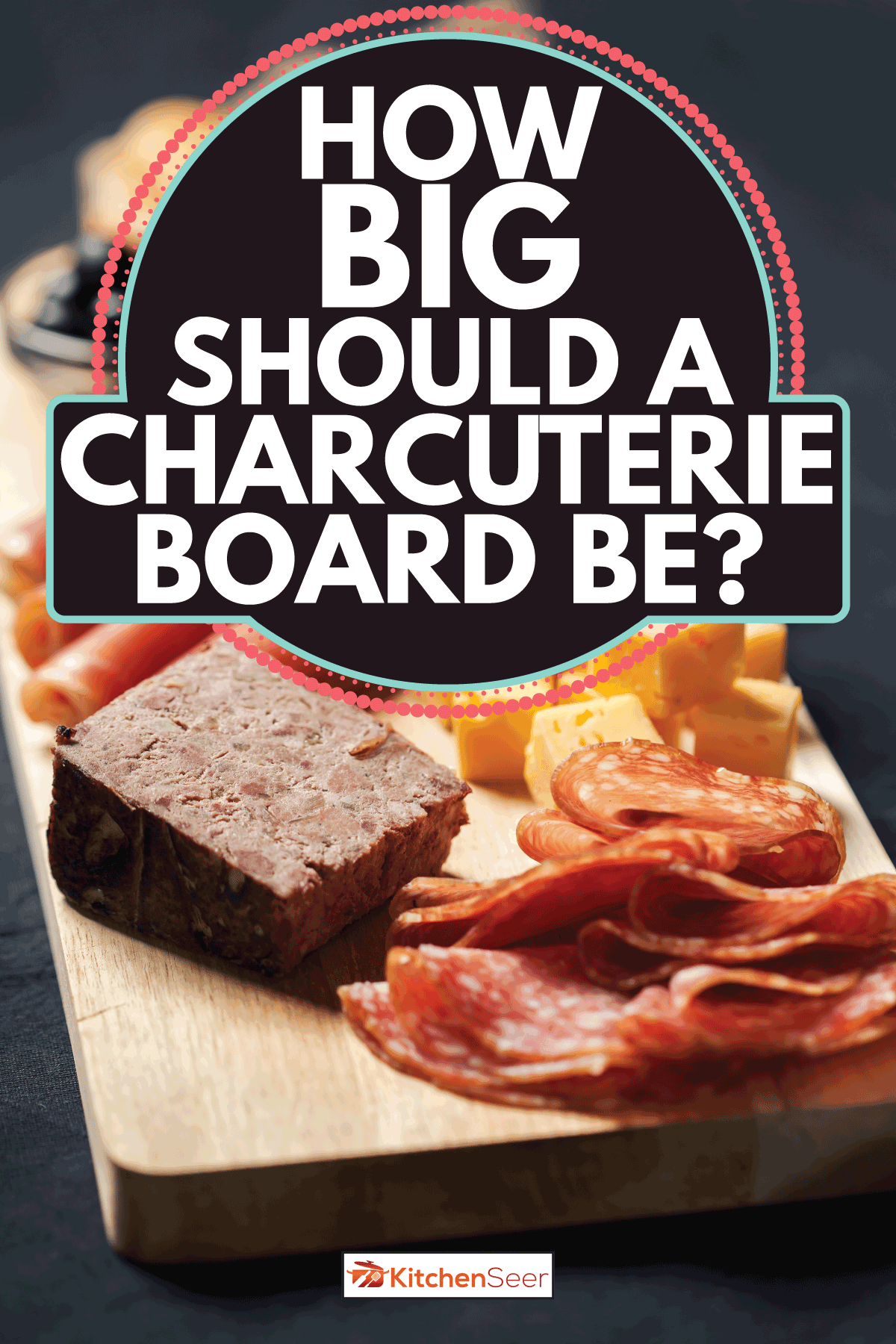
Charcuterie Board Building 101
If you are not familiar with charcuterie boards, chances are you may not be sure how to pronounce the term correctly. No problem. It is pronounced Shaar-Ku-tur-ree. If you need to hear it, click here.
Now that you can say it let's learn how to build one. Traditionally, charcuterie is a centuries-old French practice used by butchers that refers to dry-cured meats. Recently, it has evolved into modern food platters served at gatherings of all kinds. There are no rules or limits when designing a charcuterie board.
However, you do need to consider the size of your guest list and their food preferences. This will determine the size of your board. If space is limited, you may need to build multiple boards rather than just one. Also, keep in mind more is not always better. You want to have a good variety, but too many choices can become overwhelming for guests.
How Much Food?
You want to make sure that you have enough food on your board to satisfy your guests. No one wants their guests to leave a party hungry. The cured meat is the largest source of protein and should be the starting point. Everything else needs to complement your cured meat choices. Make sure you have plenty of bread.
You want to plan for 5 oz of meat per person on your board if the board is your main food for the event. However, if your board is an appetizer before a bigger meal, then 2 oz of meat per person is sufficient. Use the same rule of thumb for the cheeses. Once your meat is laid out, surround with bread, complementing cheeses, relishes, and condiments.
Variety of Food
The possibilities are endless but, traditionally, charcuterie boards were simple and included cured meats, hard and soft cheeses, bread, and herb-seasoned oil. Modern boards are more inclusive and include crackers, dips, jams, pickled items, olives, nuts, fruits, and vegetables.
However, this is only the tip of the iceberg. Be sure to consider your guest list and make accommodations and adjustments for special diets and food allergies.
If you are hosting a larger gathering, you may even choose to have more than one board. For example, the main charcuterie board would be filled with meats, cheeses, bread, and relishes. Then, consider having separate accompanying boards, one with fruits and another one with vegetables—each with various dips to go along. Finally, you could add a variety of cheeses to every board.
And, of course, a dessert board with a variety of sweet treats. Think items like candies, chocolate chips, marshmallows, pretzels, cookies, brownies, and graham crackers, to name only a few options.
Charcuterie Board Size
Charcuterie boards are available in a variety of sizes and shapes. Custom boards can be made in any size or shape that you desire. Whatever size and shape you choose, consider storage options and how often you may use it.
If you plan to build charcuterie boards often, chances are you will end up owning a variety of boards ranging from small to large with varying shapes. This may be more reasonable and give you more creative freedom than relying on one board to hold everything.
For simplicity and convenience, you might choose a charcuterie board set that includes everything you need. The board layout is a template to help you place your items. The serving utensils and bowl neatly store in a drawer underneath the board so you can eliminate the hunt and spend your time focused on arranging your board.
Check out this top-rated bamboo charcuterie board set on Amazon.
Why are charcuterie boards so popular?
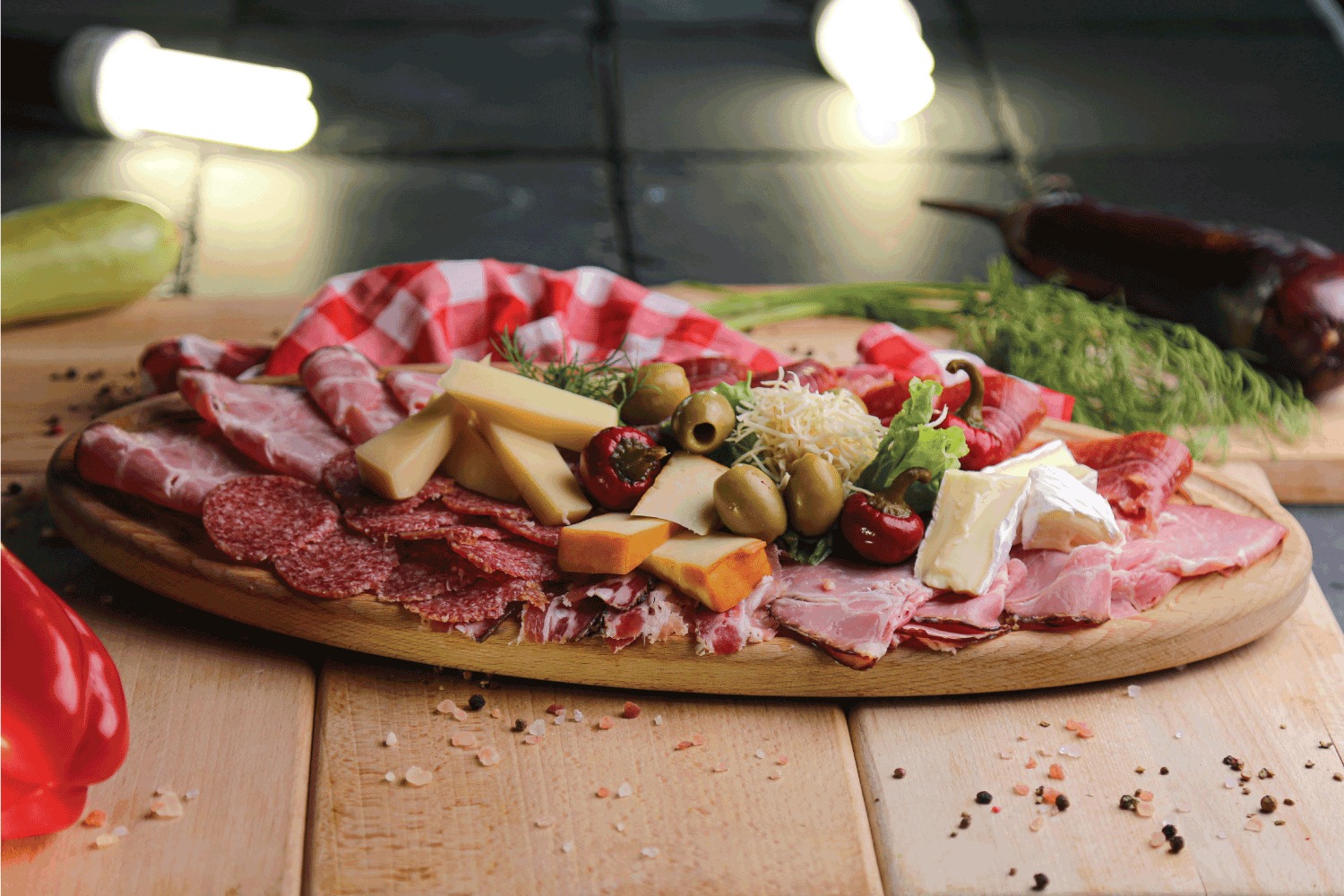
Charcuterie boards are popular because they are fun, easy, beautiful, and, let's not forget, delicious. They are an expression of the host's creativity, much like an edible piece of artwork. It is often said that people eat first with their eyes. A charcuterie board provides a great example of a visually pleasing arrangement of food for guests to enjoy.
Many people are gaining interest in the traditional art of charcuterie and learning how to dry cure their own meats. Meat curing was a common practice of necessity before refrigeration made food storage easier. What better way to showcase your hard work and preservation talents than to build a platter filled with your own goods and feed it to your loved ones.
What is the best wood for a charcuterie board?
There are many boards available for purchase. However, not all are suited to be charcuterie boards. We are here to help you know the difference between the right and wrong woods.
Non-porous woods are best for charcuterie boards. The closed pores do not absorb stains and odors as easily as other woods and resist bacteria better. Suitable woods come in various colors and grain patterns, so you can easily choose one that suits your personal taste.
Best Woods for a Charcuterie Board
- Teak
- Hard maple
- Black walnut
- American cherry
- Olive
- Acacia
- Bamboo
Check out this beautiful XL olive wood charcuterie board on Amazon.
You want to avoid porous woods with soft pores that hold bacteria and absorb the odors from the foods served on them. These properties will eventually make your board unsuitable for use.
Woods to Avoid For Charcuterie Boards
- Oak
- Ash
- Mahogany
- Cedar
- Cypress
- Fir
- Pine
- Larch
- Any type of walnut other than black walnut.
Wood is not the only material suitable for a charcuterie board. Stone boards are also available. If a stone board is your preference, marble and slate are recommended. Plastic is not a natural material and should be avoided.
Do you oil charcuterie boards?
Charcuterie boards need proper care to remain in top condition for repeated use. Oiling your board is the best protection. The oil saturates the wood fibers making it difficult for anything else to penetrate them. It also keeps the board from warping.
It is recommended to use food-grade hemp, flax, or mineral oil. Avoid using olive or mineral oils, which can leave an unpleasant odor on your board over time.
Check out this Food Grade Mineral Oil on Amazon.
For added protection, add a food-grade wax like beeswax to the surface of your board after the oil to create a seal that will make your board more resistant and easier to clean.
Check out Howard Wax-it-All on Amazon.
Can a charcuterie board be used as a cutting board?
You can use your charcuterie board as a cutting board. Some boards are designed so one side is for serving and the other side is for chopping. This might be a handy option while building a board to keep from using multiple items. Chop everything on one side, clean it, flip it and then build your masterpiece.
However, if you plan to purchase a large charcuterie board, it might not be practical to use it regularly as a cutting board. You would most likely still need to buy a smaller cutting board for everyday purposes.
Even though wood has anti-bacterial properties, you still want to be careful when using the same board as a charcuterie board and a cutting board. In addition, you do not want to risk cross-contamination from any raw foods such as meat.
The grain alignment of some wood boards creates self-healing properties, but be careful with super sharp knives. You do not want to damage the look of your beautiful board with cut marks.
Summary
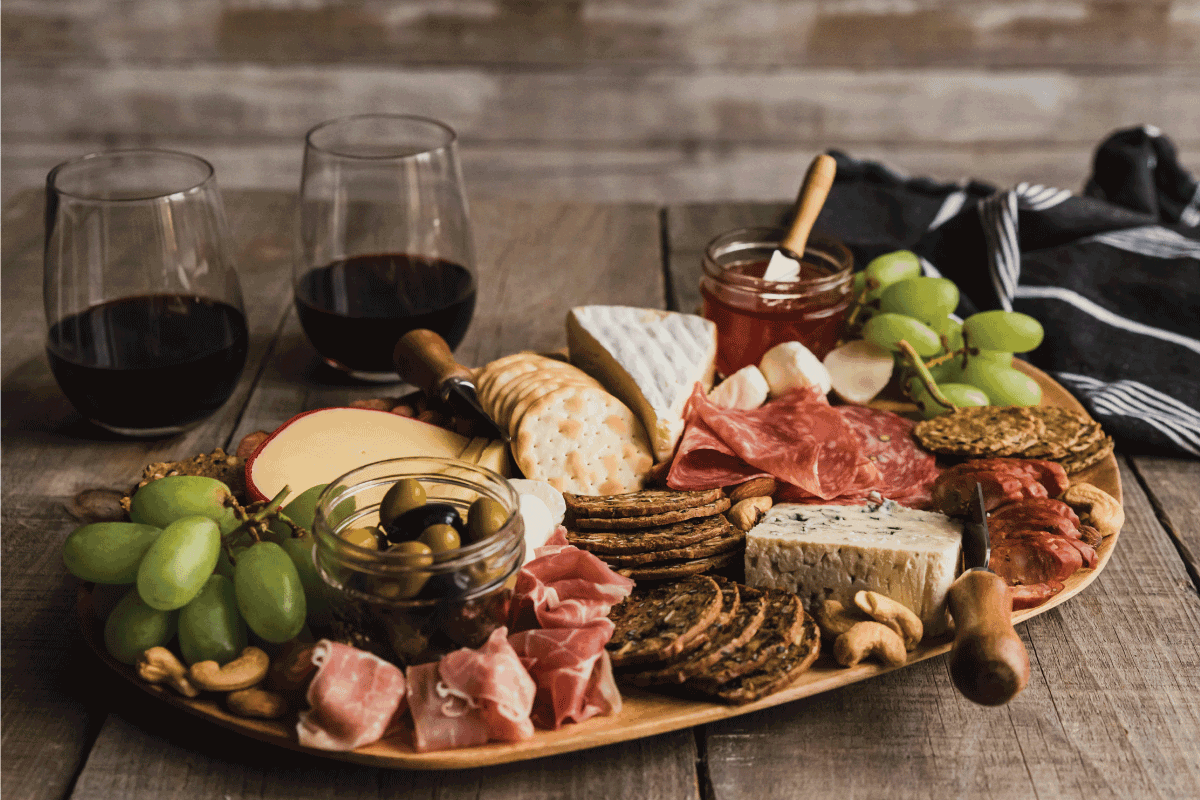
Charcuterie boards are a great way to share your creativity and satisfy the appetites of your guests. The possibilities are limited only by your own rules. Use your imagination and build something delicious.
If you consider adding cocktails to your party, check out How Many Wine and Cocktail Glasses Should you Have?
Then check out, How To Store Wine and Cocktail Glasses.




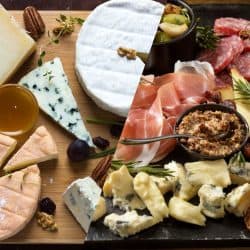
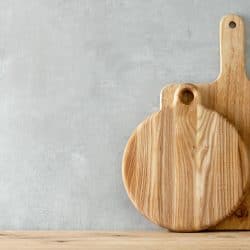
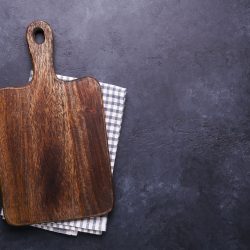

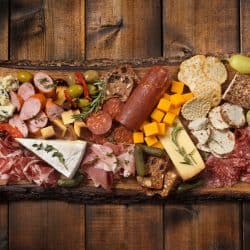
![Raw meat assortment - beef, lamb, chicken on a wooden board, Can You Cut Meat On A Wood Cutting Board? [Raw And Cooked]](https://kitchenseer.com/wp-content/uploads/2021/06/Raw-meat-assortment-beef-lamb-chicken-on-a-wooden-board-250x250.jpg)